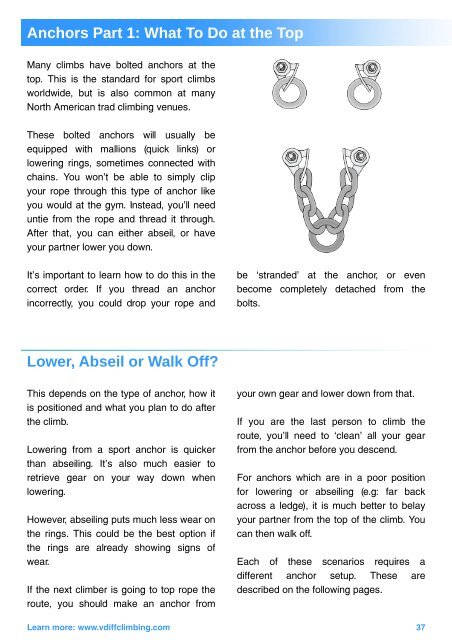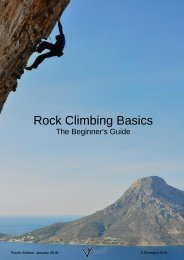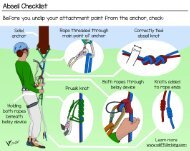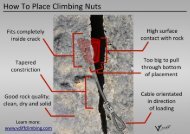Sport Climbing Basics - VDiff Climbing
This e-book will teach you how to: - Use assisted-braking belay devices - Lead sport climbs - Set up top ropes - Clean sport anchors - Abseil safely (including using a prusik knot) - Use advanced belay techniques - Climb with better technique - Assess bolt quality Plus much more. Further information: * Perfect for those who want to start sport climbing. * 200+ accurately drawn, full-colour illustrations and photos. * 115 information-packed pages. * Easy to print or view on your mobile. Take it to the crag; when in doubt, whip it out! * New for December 2017
This e-book will teach you how to:
- Use assisted-braking belay devices
- Lead sport climbs
- Set up top ropes
- Clean sport anchors
- Abseil safely (including using a prusik knot)
- Use advanced belay techniques
- Climb with better technique
- Assess bolt quality
Plus much more.
Further information:
* Perfect for those who want to start sport climbing.
* 200+ accurately drawn, full-colour illustrations and photos.
* 115 information-packed pages.
* Easy to print or view on your mobile. Take it to the crag; when in doubt, whip it out!
* New for December 2017
You also want an ePaper? Increase the reach of your titles
YUMPU automatically turns print PDFs into web optimized ePapers that Google loves.
Anchors Part 1: What To Do at the Top<br />
Many climbs have bolted anchors at the<br />
top. This is the standard for sport climbs<br />
worldwide, but is also common at many<br />
North American trad climbing venues.<br />
These bolted anchors will usually be<br />
equipped with mallions (quick links) or<br />
lowering rings, sometimes connected with<br />
chains. You won’t be able to simply clip<br />
your rope through this type of anchor like<br />
you would at the gym. Instead, you’ll need<br />
untie from the rope and thread it through.<br />
After that, you can either abseil, or have<br />
your partner lower you down.<br />
It’s important to learn how to do this in the<br />
correct order. If you thread an anchor<br />
incorrectly, you could drop your rope and<br />
beeeeeee<br />
be ‘stranded’ at the anchor, or even<br />
become completely detached from the<br />
bolts.<br />
Lower, Abseil or Walk Off?<br />
This depends on the type of anchor, how it<br />
is positioned and what you plan to do after<br />
the climb.<br />
Lowering from a sport anchor is quicker<br />
than abseiling. It’s also much easier to<br />
retrieve gear on your way down when<br />
lowering.<br />
However, abseiling puts much less wear on<br />
the rings. This could be the best option if<br />
the rings are already showing signs of<br />
wear.<br />
If the next climber is going to top rope the<br />
route, you should make an anchor from<br />
yyyyy<br />
Learn more: www.vdiffclimbing.com<br />
your own gear and lower down from that.<br />
If you are the last person to climb the<br />
route, you’ll need to ‘clean’ all your gear<br />
from the anchor before you descend.<br />
For anchors which are in a poor position<br />
for lowering or abseiling (e.g: far back<br />
across a ledge), it is much better to belay<br />
your partner from the top of the climb. You<br />
can then walk off.<br />
Each of these scenarios requires a<br />
different anchor setup. These are<br />
described on the following pages.<br />
37






